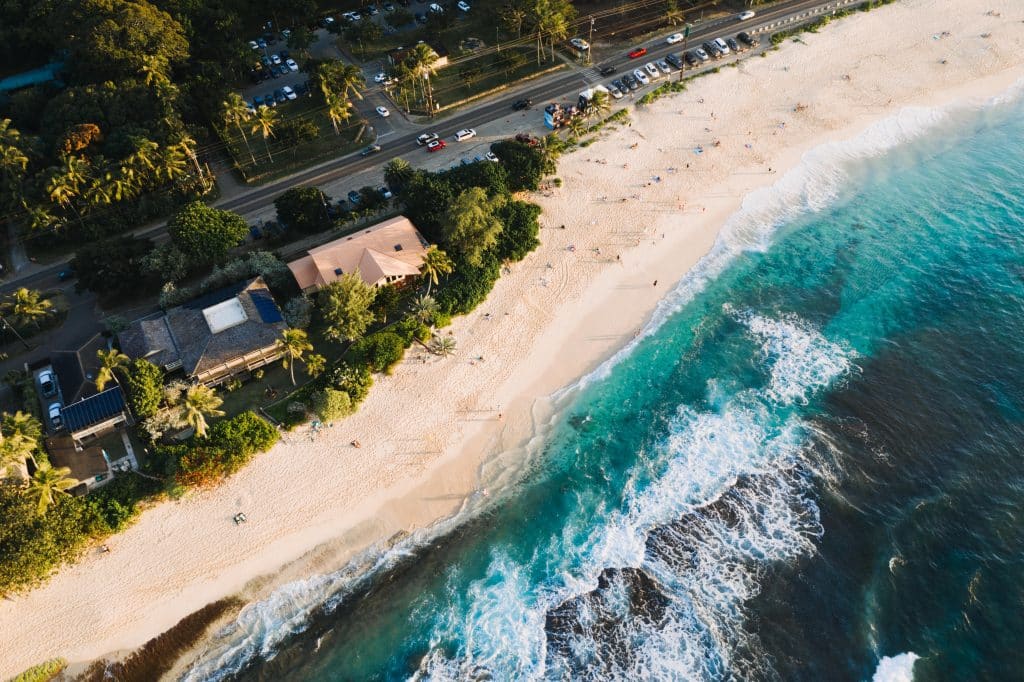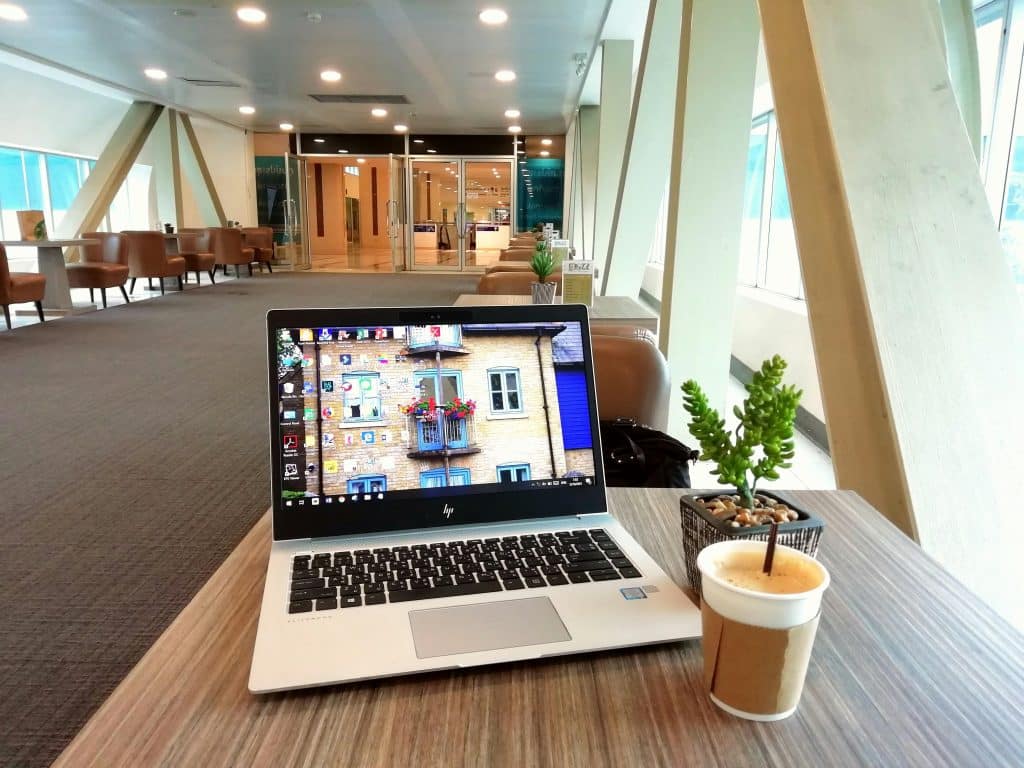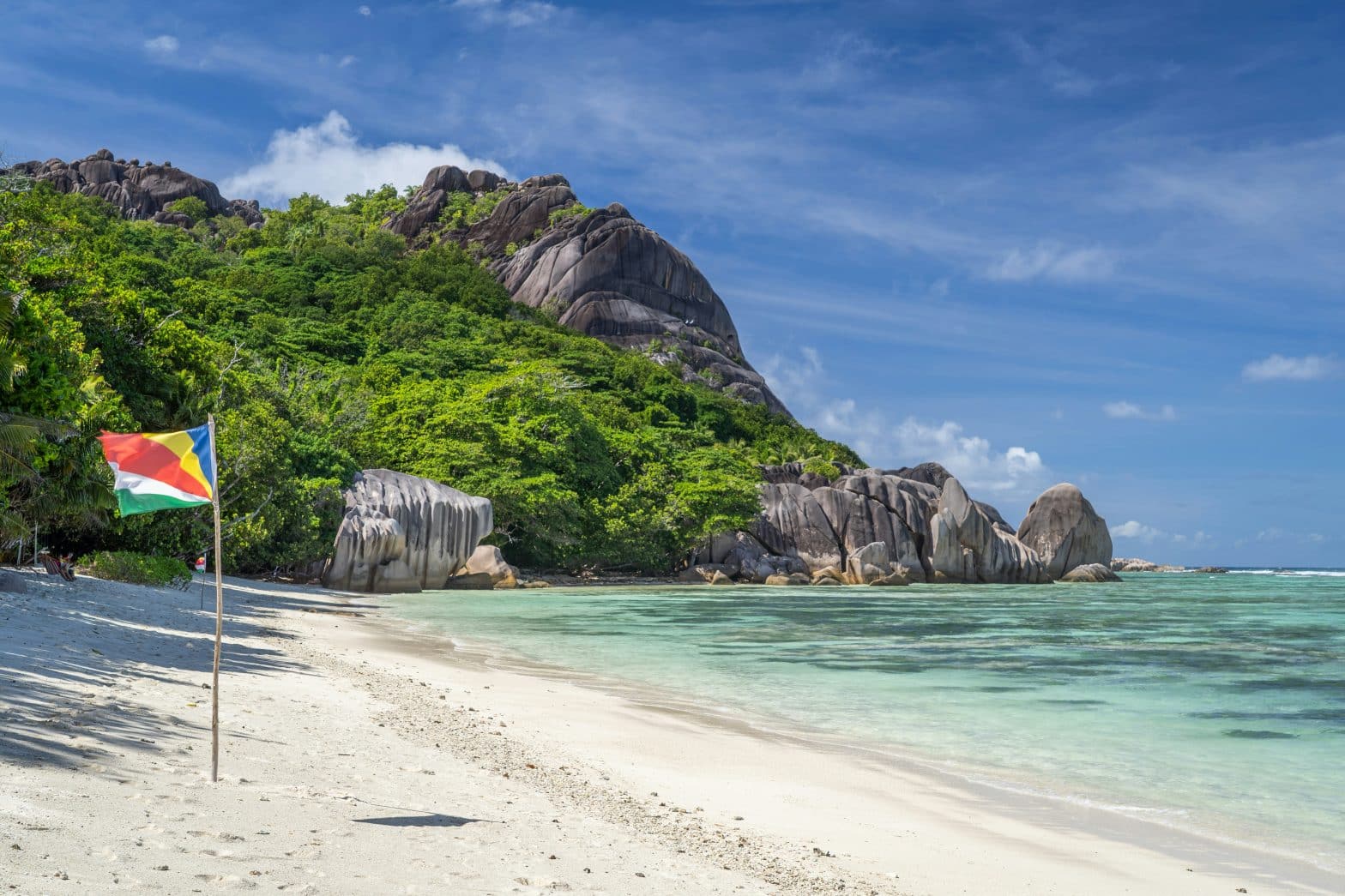Are you thinking of moving to the Seychelles alone or with your family? Is it (finally) time for you to move to a sunnier climate? Or are you going there to pursue a career opportunity?
Whatever your reasons for considering a move abroad, it’s normal to wonder what kind of budget you’ll need to live on the archipelago.
In this guide, you’ll find all the details about the cost of living in the Seychelles (housing, shopping, transport, healthcare, etc.). Let’s get started!
Overview of the average cost of living in the Seychelles
A single person should expect to need a monthly budget of €1,650 to live in the Seychelles, while a family of four should budget an average of €5,550 per month. This includes all major expenses: accommodation, shopping, transport, healthcare, leisure, etc.
| Expenses | Average price in Seychelles |
|---|---|
| Gross salary | €1,200 |
| Rent for a one-room apartment in the city centre | €800 |
| Purchase price for an apartment per m² | €600 |
| Petrol (1 l) | €1.24 |
| Mobile phone contract | €35 |
| (calls + 10 GB data) | €60 |
| Food for two people in a mid-range restaurant | €4.90 |
Currency and exchange rate
The official currency in the Seychelles is the Seychelles rupee, abbreviated ‘SCR’. Currently, 1 rupee is equivalent to €0.062. This means that 1 € is equivalent to 16.13 SCR. (As of 6 June 2025).
Restaurants, hotels and leisure facilities (beaches, amusement parks, etc.) accept payments in US dollars and sometimes even in euros. However, they often apply an unfavourable exchange rate.
Living in the Seychelles
In the Seychelles, rent for an apartment ranges from 11,600 to 27,000 SCR (€710 to €1,650), depending on location and size.
Property prices tend to vary from island to island. On Mahé Island, where most of the population lives and economic activity is concentrated, prices are generally higher, especially in popular neighbourhoods such as Eden Island or Beau Vallon. Praslin Island is also relatively expensive.
However, most expats prefer Mahé for its quality of life and infrastructure.
This is especially true as apartments in certain areas, such as the neighbourhoods of Victoria outside the city centre, are more affordable.

To give you a more accurate idea of the budget you can expect, here are the average rental prices in the main cities of the Seychelles (in euros):
| Type of accommodation | Victoria | Anse Royale | Beau Vallon |
|---|---|---|---|
| One-room apartment in the city centre | €850 | €900 | €1,050 |
| One-room apartment on the outskirts of the city | €600 | €650 | €700 |
| Three-room apartment in the city centre | €1,700 | €1,750 | €1,850 |
| Three-room apartment on the outskirts of town | €1,550 | €1,300 | €1,200 |
If you are planning to buy a property, you should expect average prices between 9,700 and 13,000 SCR (€600 to €800).
Food prices in the Seychelles
Food is the biggest expense in everyday life in the Seychelles. Here are the average prices for basic foodstuffs:
| Food | Average price in the Seychelles |
|---|---|
| Milk (1 litre) | €1,60 |
| Water (1.5 litres) | €1,30 |
| Bread (500 g) | €1,50 |
| Dozen eggs | €3,10 |
| Local cheese (1 kg) | €29 |
| Chicken fillets (1 kg) | €5,15 |
| Meat (1 kg) | €10,20 |
| Apples (1 kg) | €2 |
| Bananas (1 kg) | €2,25 |
| Tomatoes (1 kg) | €5,30 |
| Potatoes (1 kg) | €1,75 |
| Onions (1 kg) | €1,30 |
| Local beer (500 ml bottle) | €3,75 |
| Imported beer (330 ml bottle) | €5,70 |
Transport in the Seychelles
Bus: For bus travel in the Seychelles, you should expect to pay 13 SCR (€0.70) per trip.
Taxi: If you want to take a taxi, the following average prices apply:
- Base fare: 97 SCR (€6)
- Price per kilometre travelled: 29 SCR (€1.80)
- Waiting time (per hour): 290 SCR (€18)
Ferry or plane: You can take the ferry to travel between the islands. The cost of the trip depends on the distance. The ferry connection between Mahé and Praslin costs an average of 965 SCR (€60).
You can also travel from one island to another by plane, as the main islands of the archipelago have small airports designed for this purpose.
Here too, prices depend on the distance. Air Seychelles offers special rates for residents of the Seychelles (locals and expats). The flight from Mahé to Praslin costs between 890 and 1,450 SCR (€55 to €90).
Car: Finally, drivers can use their own vehicles (luckily, as in the UK, they are driving on the left) for 20 SCR (€1.24) per litre of petrol.
The cost of healthcare in the Seychelles
Here are the average prices for some medical services in the private sector in the Seychelles:
| Medical services | Average fees |
|---|---|
| Consultation with a general practitioner | 800 SCR (€50) |
| Consultation with a specialist | 1,600 SCR (€100) |
| Emergency consultation with a doctor (same day or within 24 hours) | 2,400 SCR (€150) |
| Teleconsultation | 1,600 SCR (€100) |
As expected, the cost of treatment in public hospitals is lower. By way of comparison, a visit to a general practitioner costs an average of 250 SCR (€15.50).
However, the healthcare system in the Seychelles has several weaknesses, starting with the quality of infrastructure, which varies greatly from city to city.
To protect themselves and their families, expats usually take out international private health insurance.
This covers them anywhere in the world, whether in the Seychelles or elsewhere. It also covers the costs of emergency repatriation and provides quick access to high-quality medical care in the best facilities in the country.

Education in the Seychelles
If you have children, you can enrol them in state or international schools, which are either French- or English-speaking.
For a private nursery, you should budget an average of 2,200 SCR (€130) per month per child. For an international primary school, the school fees are 122,000 SCR, or €7,500 per school year.
If you would like to give your child a French-language education, the École Française des Seychelles in Victoria is the perfect choice. Here are the costs for the 2024-2025 school year:
- Kindergarten: 5,179 SCR (€320)
- Primary school: 5,354 SCR (€332)
- Year 6: 7,212 SCR (€450)
- Years 5, 4 and 3: 7,649 SCR (€475)
- Year 10: 7,108 SCR (€440)
- Year 11: 7,824 SCR (€485)
- A-levels: 8,742 SCR (€542)
The International School Seychelles (ISS) is an international school located in Mont Fleuri, Mahé. The language of instruction is English. Graduation is based on the British system (IGCSE, A-Levels). Depending on the class, school fees for the school year range from 11,214 (€800) to 21,420 SCR (€1,500) per year, depending on the class
Leisure activities in the Seychelles
Leisure activities in the Seychelles are not limited to the beach and sunbathing! If you have already been to this country, you know that the archipelago has much more to offer.
There are numerous activities available, and here is an overview of the prices:
- Hike in Morne National Park: 150 SCR (€9).
- Cappuccino in town: 70 SCR (€4.20).
- Visit to the National Museum in Victoria: 150 SCR (€9).
- Swimming at Anse Source d’Argent beach: 150 SCR (€9).
- Kayaking at the same beach: 750 SCR (€45) per adult, 417 SCR (€25) per child.
- Gym membership: 985 SCR per month (€59).
- Cinema: 82.50 SCR (€4.90) per ticket.
What is the average salary for an expat in the Seychelles?
The average gross salary in the Seychelles is €14,500 per year, or around €1,200 per month. However, expats often earn more than locals.
This difference can be explained in particular by the position of expats in companies. They often hold management positions (executives, management, etc.) and usually work in international companies that offer more attractive salaries.

Cost of living in the Seychelles compared to France
On average, the cost of living in the Seychelles is 4% lower than in France.
In practice, however, the difference can be greater depending on the region. For example, living in Paris costs about 35% more than in Victoria.
However, the average purchasing power in France remains higher. This is mainly due to the fact that the average gross salary in France (€2,500) is about twice as high as in the Seychelles (€1,200).
Cost of living in the Seychelles compared to the United Kingdom
On average, the cost of living in the Seychelles is 10.8% lower than in the United Kingdom (including rent).
However, rent in the Seychelles is 1.8% higher than in the United Kingdom.
In practice, the difference can be more significant depending on the city. For example:
- Studio in Berlin (city centre): approx. £750 per month
- Studio on Mahé (Victoria city centre): approx. £700 per month
The average purchasing power in Germany, on the other hand, is significantly higher.
- Average monthly net income in Germany: approx. £2,700
- Average monthly net income in the Seychelles: approx. £700
And compared to Réunion?
Life in the Seychelles is slightly more expensive than in Réunion, mainly due to housing costs, which are up to 25% higher.
However, La Réunion is not necessarily cheap: life there is often more expensive than in France, especially food, which can cost up to 37% more than on the French mainland.
Cost of living in the Seychelles compared to neighbouring countries
Compared to Mauritius
Life in the Seychelles is on average 38% more expensive than in Mauritius. This is mainly due to rental prices. Comparing prices in the capitals of both countries, a studio in downtown Victoria costs an average of £750, while in Mauritius it costs £400.
However, it should be noted that residents, especially expats in Mauritius, have 40% higher purchasing power than residents of the Seychelles.
This can be explained by the lower cost of living in Mauritius, even though the average salary is almost the same as in the Seychelles.
If you are interested in this topic, read our complete guide to the cost of living in Mauritius.
Compared to Madagascar
The cost of living in Madagascar is significantly lower than in the Seychelles. Living in the Seychelles requires a budget that is up to 180% higher than living in Madagascar. All expenditure items are higher there.
However, this is also accompanied by a significantly higher average salary. In Madagascar, it is €3,000 per year, while in the Seychelles, as already mentioned, it is €14,500 per year.
This difference can be explained by the different economic conditions in the two countries, as three out of four people in Madagascar live below the poverty line.
